
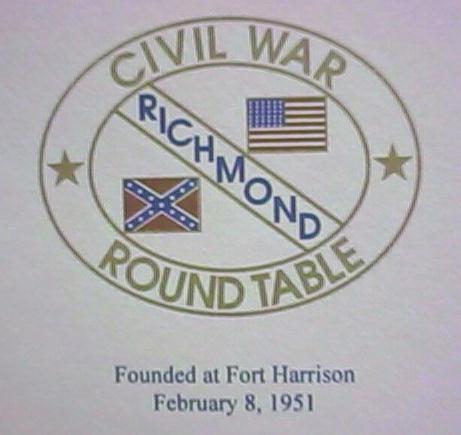

July 2011 - rcwrt.org
David Whitehead, Pres. Gary Cowardin, Editor 4305 Cary Street Rd. 1404 Lorraine Ave. Richmond, VA 23221 Richmond, VA 23227-3735 davidwhitehead1@comcast.net cowardin@juno.com
Earl J. Hess Overland to Appomattox: Field Fortifications in Virginia, 1864-1865 8:00 p.m., Tuesday, July 12, 2011, at the First Presbyterian Church, Richmond, VA., 4602 Cary Street Road, 23226 A parking lot is available behind the church with an entrance off the parking lot to the left and down a few stairs.
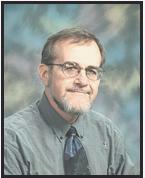 Anyone who has ever stumbled across ghostly entrenchments in some
Hanover County forest, studied the effective use of terrain along the
North Anna, marveled at the trench lines at Cold Harbor, or walked among
the remnants of forts and redoubts near Petersburg will want to attend
our meeting on July 12th. We are very fortunate to have, as our
speaker, Dr. Earl Hess. He will share with us some of his findings
concerning the tactics, techniques, and procedures employed by the Blue
and the Gray as they grappled with each other from the Wilderness to
Petersburg and beyond. No historian has done more to explain the
reasons for the large scale use of field fortifications during the final
year of the Civil War. We will all benefit from this presentation by a
true expert on the subject.
Dr. Earl J. Hess has been a student of Civil War history since he was
a teenager, growing up in rural Missouri. He completed his B.A. and
M.A. degrees in History at Southeast Missouri State University. His
Ph.D. in American Studies, with a concentration in History, was awarded
by Purdue University in 1986. He has taught at a number of
institutions, including the University of Georgia, Texas Tech
University, and the University of Arkansas. Since 1989, he has been at
Lincoln Memorial University, in Harrogate, Tennessee, where he is
Associate Professor of History, director of the History Program, and
holds the Stewart McClelland Chair. Dr. Hess has published twelve
books, twenty-three articles, and more than 100 book reviews. Among his
publications are a number of well-received studies on the use of field
fortifications during the Civil War. Round Table members will be
familiar with many of the titles of his books. Among them are Field
Armies and Fortifications in the Civil War: The Eastern Campaigns,
1861-1864 (2005), Trench Warfare under Grant and Lee: Field
Fortifications in the Overland Campaign (2007), In the Trenches at
Petersburg: Field Fortifications and Confederate Defeat (2009), and Into
the Crater: The Mine Attack at Petersburg (2010). He is also the author
of The Rifle Musket in Civil War Combat: Reality and Myth (2008). Dr.
Hess is married to Dr. Pratibha Dabholkar, who is an Associate
Professor of Marketing at the University of Tennessee.
Be sure to come early to get a good seat.
Meeting Attendance: June 2011 = 91
NOTE: Please put on your NAME BADGE on when you arrive for the meeting.
(They will be on a table near the back or side of the room.)
Anyone who has ever stumbled across ghostly entrenchments in some
Hanover County forest, studied the effective use of terrain along the
North Anna, marveled at the trench lines at Cold Harbor, or walked among
the remnants of forts and redoubts near Petersburg will want to attend
our meeting on July 12th. We are very fortunate to have, as our
speaker, Dr. Earl Hess. He will share with us some of his findings
concerning the tactics, techniques, and procedures employed by the Blue
and the Gray as they grappled with each other from the Wilderness to
Petersburg and beyond. No historian has done more to explain the
reasons for the large scale use of field fortifications during the final
year of the Civil War. We will all benefit from this presentation by a
true expert on the subject.
Dr. Earl J. Hess has been a student of Civil War history since he was
a teenager, growing up in rural Missouri. He completed his B.A. and
M.A. degrees in History at Southeast Missouri State University. His
Ph.D. in American Studies, with a concentration in History, was awarded
by Purdue University in 1986. He has taught at a number of
institutions, including the University of Georgia, Texas Tech
University, and the University of Arkansas. Since 1989, he has been at
Lincoln Memorial University, in Harrogate, Tennessee, where he is
Associate Professor of History, director of the History Program, and
holds the Stewart McClelland Chair. Dr. Hess has published twelve
books, twenty-three articles, and more than 100 book reviews. Among his
publications are a number of well-received studies on the use of field
fortifications during the Civil War. Round Table members will be
familiar with many of the titles of his books. Among them are Field
Armies and Fortifications in the Civil War: The Eastern Campaigns,
1861-1864 (2005), Trench Warfare under Grant and Lee: Field
Fortifications in the Overland Campaign (2007), In the Trenches at
Petersburg: Field Fortifications and Confederate Defeat (2009), and Into
the Crater: The Mine Attack at Petersburg (2010). He is also the author
of The Rifle Musket in Civil War Combat: Reality and Myth (2008). Dr.
Hess is married to Dr. Pratibha Dabholkar, who is an Associate
Professor of Marketing at the University of Tennessee.
Be sure to come early to get a good seat.
Meeting Attendance: June 2011 = 91
NOTE: Please put on your NAME BADGE on when you arrive for the meeting.
(They will be on a table near the back or side of the room.)
A Word from Our President Welcome to summer! Our July RCWRT meeting is near - July 12. Jack has provided another excellent speaker - Earl Hess. Please bring a friend and enjoy the talk. Don't forget the books to bring and sell to others for $5-10. I hope all are learning during our Sesquicentennial. David Whitehead, Pres. RCWRT
2011 RCWRT FIELD TRIP
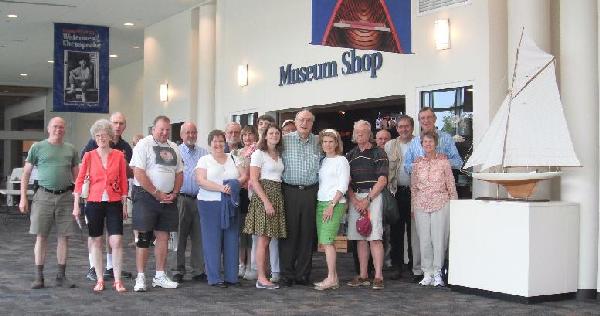 We had our annual field trip Saturday, June 18, 2011, visiting the new
USS Monitor Center at the Mariners' Museum in Newport News, the
Monitor-Merrimack Overlook Park, and Drewry's Bluff.
We had our annual field trip Saturday, June 18, 2011, visiting the new
USS Monitor Center at the Mariners' Museum in Newport News, the
Monitor-Merrimack Overlook Park, and Drewry's Bluff.
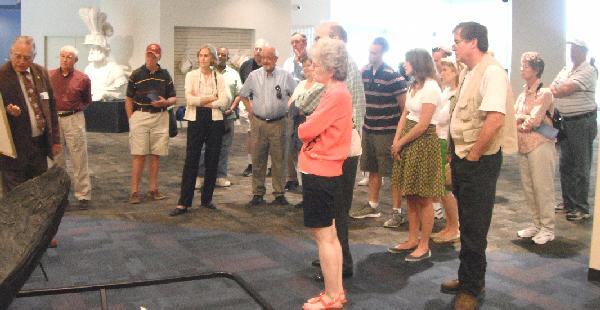 We were met by Anna Holloway, our May Speaker, who passed us over to one
of their great historians who helped us start our tour. A salad, three
kinds of fresh sandwiches, and cookies were served for lunch in a quiet
private room in the Museum.
We were met by Anna Holloway, our May Speaker, who passed us over to one
of their great historians who helped us start our tour. A salad, three
kinds of fresh sandwiches, and cookies were served for lunch in a quiet
private room in the Museum.
 During the tour we were able to walk around a full size mockup of the
Monitor and its turret. The real one is nearby in a tank undergoing an
electrolysis process. After leaving the museum we rode over to the
Monitor-Merrimack Overlook Park where we were able to get out and walk
along the shore and pier.
During the tour we were able to walk around a full size mockup of the
Monitor and its turret. The real one is nearby in a tank undergoing an
electrolysis process. After leaving the museum we rode over to the
Monitor-Merrimack Overlook Park where we were able to get out and walk
along the shore and pier.
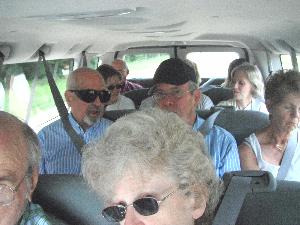
 After the park we loaded the van and headed to Drewry's Bluff.
We left the parking lot at 8:07am and returned at 6:01pm right on time!
After the park we loaded the van and headed to Drewry's Bluff.
We left the parking lot at 8:07am and returned at 6:01pm right on time!
Book Report
 A Glorious Army
By Jeffry Wert
At first glance I expected this book to be a repeat of the same old
civil war history of the Army of Northern Virginia, but thankfully I
took a closer look and was very pleasantly surprised.
From the time Robert E. Lee took command of the Army of Northern
Virginia on June 1, 1862, until the Battle of Gettysburg thirteen months
later, the Confederate army compiled a record of military achievement
unparalleled in our nation's history. By following the armies, the
leaders and the men themselves Jeffry Wert has compiled a very readable,
informative history of the Army of Northern Virginia and the civil war.
From Seven Days to Second Manassas, Antietam, Chancellorsville and
Gettysburg Wert not only follows the armies onto the field of battle,
but offers fresh assessments of Lee and his top commanders Longstreet,
Jackson and Stuart: and a shrewd battle strategy that still offers
lessons to military commanders today.
Wert shows how the same audacity, (his favorite and most often used word
throughout the book), and aggressiveness that fueled Lee's victories,
proved disastrous at Gettysburg. But as he points out, Lee had little
choice, outnumbered by an opponent with superior resources, he had to
take the fight to the enemy to win. For a year his superior generalship
had prevailed against his opponents, but eventually what Lee's trusted
lieutenant General James Longstreet called "headlong combativeness"
caused Lee to miscalculate. Then in 1864 an equally combative Ulysses
S. Grant took command of the northern forces and Lee was defeated.
By quoting historians Gary Gallagher, Joseph Harsh, Douglas Southall
Freeman, Robert K. Krick, and Robert E. Lee Krick plus drawing from
unpublished diaries, letters and many sources never before used this
book this book is an interesting study for the veteran civil war reader
as well as someone just getting interested in the subject and will make
a good addition to any civil war library. ISBN 978-1-4165-9334-8
Book Report by,
Danny Witt
A Glorious Army
By Jeffry Wert
At first glance I expected this book to be a repeat of the same old
civil war history of the Army of Northern Virginia, but thankfully I
took a closer look and was very pleasantly surprised.
From the time Robert E. Lee took command of the Army of Northern
Virginia on June 1, 1862, until the Battle of Gettysburg thirteen months
later, the Confederate army compiled a record of military achievement
unparalleled in our nation's history. By following the armies, the
leaders and the men themselves Jeffry Wert has compiled a very readable,
informative history of the Army of Northern Virginia and the civil war.
From Seven Days to Second Manassas, Antietam, Chancellorsville and
Gettysburg Wert not only follows the armies onto the field of battle,
but offers fresh assessments of Lee and his top commanders Longstreet,
Jackson and Stuart: and a shrewd battle strategy that still offers
lessons to military commanders today.
Wert shows how the same audacity, (his favorite and most often used word
throughout the book), and aggressiveness that fueled Lee's victories,
proved disastrous at Gettysburg. But as he points out, Lee had little
choice, outnumbered by an opponent with superior resources, he had to
take the fight to the enemy to win. For a year his superior generalship
had prevailed against his opponents, but eventually what Lee's trusted
lieutenant General James Longstreet called "headlong combativeness"
caused Lee to miscalculate. Then in 1864 an equally combative Ulysses
S. Grant took command of the northern forces and Lee was defeated.
By quoting historians Gary Gallagher, Joseph Harsh, Douglas Southall
Freeman, Robert K. Krick, and Robert E. Lee Krick plus drawing from
unpublished diaries, letters and many sources never before used this
book this book is an interesting study for the veteran civil war reader
as well as someone just getting interested in the subject and will make
a good addition to any civil war library. ISBN 978-1-4165-9334-8
Book Report by,
Danny Witt
Civil War Trust For the latest CWT news visit: www.civilwar.org
Upcoming Events
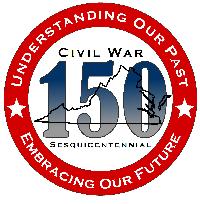 www.virginiacivilwar.org
Virginia Civil War Sesquicentennial Commission
www.virginiacivilwar.org
Virginia Civil War Sesquicentennial Commission
Visit The Museum of the Confederacy Online www.moc.org
Visit The American Civil War Center at Historic Tredegar www.tredegar.org and their Events Calendar
Pamplin Historical Park and The National Museum of the Civil War Soldier www.pamplinpark.org and their Special Events Calendar
RCWRT Monthly Speakers for 2011
If you have an E-mail address and internet access and are not currently receiving your newsletter notification via E-mail please let me have your NAME and E-mail address. My E-mail address is: cowardin@juno.com (Just click my E-mail address above)
Return to News Letters Index
Return to main page

©R.C.W.R.T. 2011